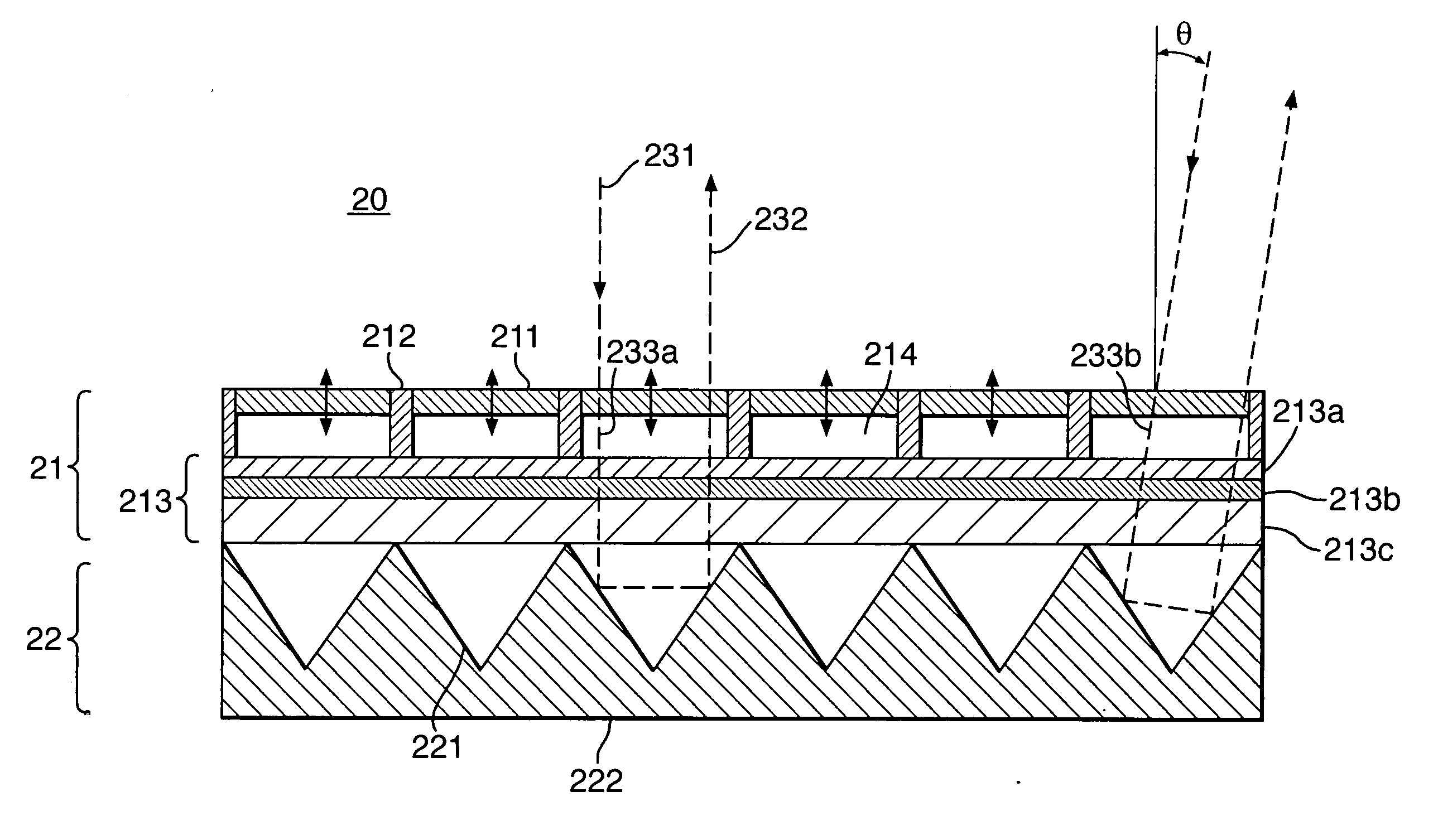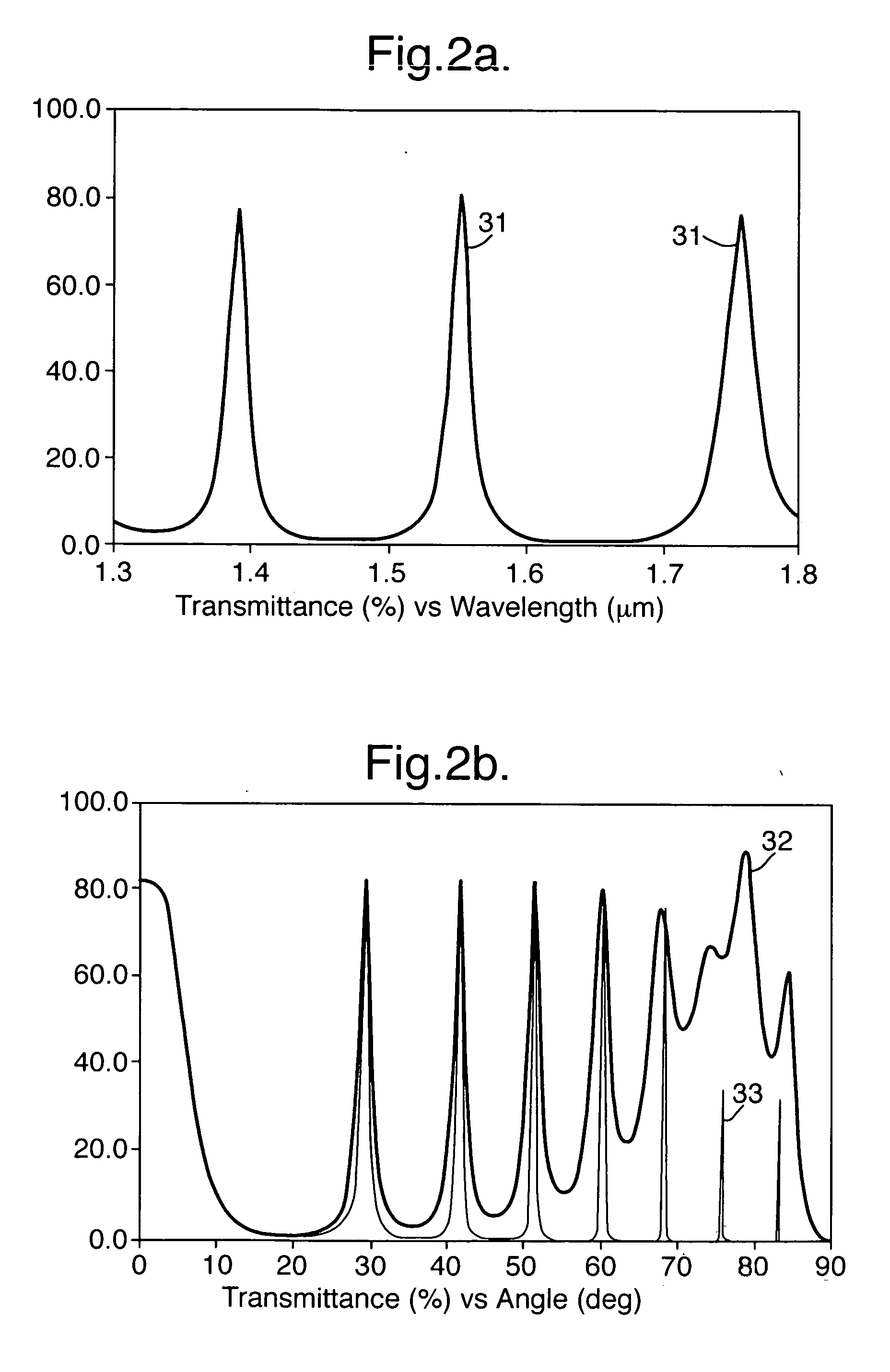Dynamic optical reflector and interrogation system
- Summary
- Abstract
- Description
- Claims
- Application Information
AI Technical Summary
Benefits of technology
Problems solved by technology
Method used
Image
Examples
Embodiment Construction
[0061] Referring to FIG. 1, the basis of the invention lies in an optical device 20 which combines an optical modulator 21 (for example a MOEMS modulator) with a retro-reflector 22 (for example a micro-corner cube array). The modulator may be a tuneable Fabry Perot etalon 21 which acts as a wavelength-selectable shutter, controlling the degree to which laser radiation 231 is admitted to the individual retro-reflecting elements 221.
[0062] The etalon comprises a composite membrane 211, a silicon wafer 213 (comprising multiple layers 213a-c), and electrostatically-driven elements 212 arranged to vary the separation between the membrane 211 and the wafer 213 which may comprise multiple layers 213a-c. Together these components define internal cavities 214 which may be air- or gas-filled cavities or, more preferably, vacuum cavities so as to avoid the damping effects of air / gas and to ensure acceptable phase shifts can be produced at high frequencies.
[0063] The membrane may itself compr...
PUM
 Login to View More
Login to View More Abstract
Description
Claims
Application Information
 Login to View More
Login to View More - R&D
- Intellectual Property
- Life Sciences
- Materials
- Tech Scout
- Unparalleled Data Quality
- Higher Quality Content
- 60% Fewer Hallucinations
Browse by: Latest US Patents, China's latest patents, Technical Efficacy Thesaurus, Application Domain, Technology Topic, Popular Technical Reports.
© 2025 PatSnap. All rights reserved.Legal|Privacy policy|Modern Slavery Act Transparency Statement|Sitemap|About US| Contact US: help@patsnap.com



